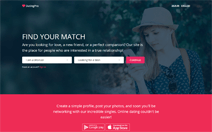Key Metrics For Your Dating Startup: From CAC To LTV And Retention
Building a dating platform means working at the intersection of emotion and data. Users come for connection, attention, and the thrill of a new match. You, as the founder, come for structured growth, predictable numbers, and a product that doesn’t just survive in the market — but thrives.
Metrics are what bring clarity to this world of swipes, hearts, likes, and silent exits. They don’t romanticize, they don’t exaggerate — they show reality. And once you learn to read them, your dating startup transforms from a hopeful idea into a scalable, measurable business.
Below is a complete guide to the core KPIs that define the success of any dating platform.
Why Metrics Are The Heart Of Any Dating Business
Every advertising campaign, feature update, pricing experiment, or onboarding tweak changes the numbers. Metrics are the only way to understand:
• how users move through your product
• where they get stuck
• what they enjoy
• what they are willing to pay for
• when and why they leave
A dating product without analytics is a blind project relying on luck.
A dating product with analytics becomes a machine of controlled growth, where every lever and every metric has a purpose.
CAC: The Cost Of Winning A New User
Customer Acquisition Cost (CAC) tells you how much you pay for each new user.
It’s the first number investors ask about because it determines if the business can scale without burning the budget into dust.
CAC formula:
total marketing spend / number of new users
Typical CAC in the dating industry:
• USA: $4–8 with proper targeting, $12–25 with broad audiences
• Europe: $2–6
• Asia & Africa: $0.5–3
• Premium niches: $10–35
A rising CAC often means:
• misaligned targeting
• weak creatives
• your landing page doesn’t match the ad’s promise
• users don’t instantly understand the value
Activation: When Users Actually Start “Living” On Your App
A signup isn’t activation.
A user becomes active only when they start engaging with the product:
• uploading a photo
• completing at least 60–70% of their profile
• sending a message
• liking someone
• receiving a match
If registration numbers are high but engagement is low, activation is the crack in your funnel.
Activation benchmarks:
• below 25–30% — problem
• 30–40% — acceptable
• 40–55% — good
• 60%+ — excellent, especially for niche apps
Low activation usually comes from:
• empty onboarding screens
• lack of instant matches
• no visible activity
• too long registration flow
• unclear “next action” for new users
Retention: The Truest Metric In The Dating Industry
Retention shows how many users come back. Without retention, growth is impossible — you simply rotate new people in and watch them fall out the other side.
Key benchmarks:
• Day-1: 35–55%
• Day-7: 10–25%
• Day-30: 5–12%
Sharp retention drops usually mean:
• too few real, active profiles
• few likes / matches
• poor user experience
• toxic community or lack of moderation
• laggy mobile experience
Dating platforms have a special twist: some users leave because they genuinely found someone — that’s normal. But retention should not collapse within the first week.
ARPU & ARPPU: Understanding Your Real Revenue
ARPU (Average Revenue Per User) — average revenue across all users.
ARPPU (Average Revenue Per Paying User) — average revenue per paying user.
These metrics show how strong your monetization model really is.
Benchmarks:
• ARPU: $0.7–$5
• ARPPU: $15–$40
The best revenue drivers in dating apps:
• premium visibility boosts
• unlimited messaging
• seeing who liked you
• virtual gifts
• coin/credit systems
• advanced search filters
Dating users don’t like to subscribe, but they love micro-actions — boosts, shortcuts, instant perks.
LTV: The Most Important Metric For Long-Term Sustainability
Lifetime Value (LTV) shows how much revenue one user brings across their entire journey. It’s the core metric that determines whether your marketing is profitable.
Golden rule:
LTV must be at least 3× CAC.
Typical LTV ranges:
• mainstream dating apps: $15–$50
• premium niches: $60–$150
• specialized communities: $150–$300+
If LTV is low, it usually means:
• retention is weak
• monetization lacks value
• users don’t stay long enough to convert
Conversion To Paid: The Moment Users Open Their Wallet
This metric tells you what percentage of your audience becomes paying customers.
Benchmarks:
• 1–3% — standard
• 4–7% — strong
• 8–15% — excellent for niche audiences
Top-selling features in dating apps:
• seeing who liked you
• boosting profile visibility
• unlimited messaging
• premium discovery filters
Users don’t pay “just because.” They pay when they see a shortcut toward connection.
Cohort Analysis: Your Strategic Vision
Cohort analysis shows how users behave over time when grouped by:
• signup month
• traffic source
• country
• device
• campaign
It reveals:
• which ads bring long-term users
• which updates improved retention
• which markets have the highest LTV
• when and why users drop off
Without cohorts, you only see surface-level averages.
With cohorts, you see the truth.
What Dating Startup Founders Should Do Right Now
-
Set up core analytics: CAC, activation, retention, ARPU, LTV, conversion to paid.
-
Find the bottleneck: traffic → onboarding → activation → matches → retention → monetization.
-
Run improvement cycles: change → measure → iterate.
-
Segment everything: countries, devices, gender, campaign types, platforms.
-
Test features in controlled batches.
Numbers — not assumptions — should shape your roadmap.
And Most Importantly — You’re Not Alone
The Dating Pro team is ready to help you at every stage of building and scaling your platform.
We can support you with:
• analytics setup and interpretation
• funnel optimization (activation, retention, monetization)
• UX improvements to boost conversions
• monetization expansion and pricing refinement
• market-by-market product tuning
• growth strategy and cohort analysis
We work with dating platforms worldwide and know exactly which solutions increase conversions, improve retention, and grow revenue — and which ones drain resources.
Key Metrics, Analytics, And Growth For Dating Apps
What are the most important metrics for a dating app?
The core metrics are CAC (Customer Acquisition Cost), Activation Rate, Retention Rate (Day-1, Day-7, Day-30), ARPU, ARPPU, LTV (Lifetime Value), Conversion to Paid, and cohort-based retention. These metrics determine acquisition efficiency, user engagement, and long-term profitability.
What is a good CAC for a dating startup?
A strong CAC benchmark for dating apps is:
• USA: $4–8
• Europe: $2–6
• Asia/Africa: $0.5–3
CAC above $10–12 in broad markets usually indicates poor targeting or weak ad creatives.
What is a good retention rate for dating apps?
Typical retention benchmarks:
• Day-1: 35–55%
• Day-7: 10–25%
• Day-30: 5–12%
If retention drops below these ranges, it usually means users aren’t getting matches, the onboarding is weak, or the catalog of profiles is too empty.
What is Activation Rate in dating apps?
Activation Rate measures how many users start meaningful activity:
uploading photos, completing their profile, sending messages, liking profiles.
A good activation rate for dating apps is 40–55%.
What is a good LTV for dating apps?
LTV ranges typically look like this:
• Mainstream dating apps: $15–50
• Premium niches: $60–150
• Specialized micro-niches: $150–300+
A strong dating business keeps LTV at least ×3 higher than CAC.
How do dating apps make money?
Dating apps earn revenue through:
• Premium subscriptions
• Coins/credits
• Boosting visibility
• Unlocking “who liked you”
• Unlimited messaging
• Virtual gifts
• Priority placement in feeds
Hybrid monetization models yield the highest ARPU.
What is a good conversion rate to paid for a dating platform?
Industry benchmarks:
• Standard: 1–3%
• Good: 4–7%
• Excellent (niche apps): 8–15%
High conversion requires clear value in premium features.
Why is cohort analysis important for dating apps?
Cohort analysis shows how different user groups behave over time, helping founders identify:
• which ad channels bring high-quality users
• which updates improve retention
• which countries produce the highest revenue
• where users are dropping off
It’s essential for long-term growth decisions.
What causes low user retention in dating apps?
Most common reasons:
• too few active profiles
• lack of instant matches
• weak onboarding
• slow app performance
• fake profiles or poor moderation
• unbalanced gender ratio
Improving early engagement usually fixes retention.
What metrics do investors expect from dating startups?
Investors look for:
• stable CAC
• healthy activation
• improving retention curves
• strong ARPU and LTV
• predictable revenue trends
• scalable monetization
• positive cohort retention
They want to see that each new user becomes more valuable over time.
How can dating apps increase revenue?
Effective ways include:
• adding micro-transactions (boosts, visibility, gifts)
• offering multiple premium tiers
• personalized pricing by country
• AI-powered recommendations or profile reviews
• smart upsells inside chat and matches
More payment options = higher ARPU.
How can Dating Pro help dating startups grow?
Dating Pro assists with:
• analytics setup and KPI dashboards
• retention and activation optimization
• monetization strategy and premium design
• UX improvements for higher conversions
• technical implementation of boosts, coins, and subscriptions
• localized growth strategies for new markets
The team provides expert guidance from launch to scale.




